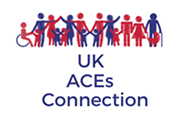According to researchers at Kings College London, air pollution kills roughly 9,500 people in the city on average every year. Another study, commissioned by the Khan, found that there are over 800 educational institutions in the city where pupils are exposed to levels of nitrogen dioxide that breach the European Union's legal limits. Members of Parliament have even termed it a national health emergency.
"This is, without doubt, a public-health disaster," says Jonathan Grigg, a professor of environmental medicine at Queen Mary University of London and the lead author of the Royal College of Physicians' Report on the long-term effects of air pollution.
Children have become the unofficial martyrs in London's war against air pollution, and while that outsized focus from environmental groups has raised awareness across the capital, some worry that it obscures the effects of air pollution on marginalized groups. Immigrants and the city's poor, a large number of whom are non-white, live in some of the city's most polluted neighborhoods in East London. In a study conducted at Imperial College London, Fecht found that the worst air pollution levels in the country are found in ethnically diverse neighborhoods, defined as those where more than 20 percent of the population are non-white.
"If people were to pay attention to this, they'd have to pay attention to poor housing conditions and the highly polluted areas that many people of color live in, poor facilities they have access to, the lack of green spaces, and more broadly the segregated demographics and structural inequalities in this country," she wrote. "Environmental justice is not a stand-alone issue, and I don't think many people want to engage with this."
To read more of Rohan Naik's article, please click here.

Comments (0)